
On the rim of Europe’s largest alpine meadow, broods Bullaccia. This hulking plateau offers a spellbinding hike to the Hexenbänke — throne-like stones carved by time, tale and terror. Slither into our post to discover how to visit the legendary “Witches’ Benches,” where the views hypnotize and the mountain hums with old magic.
Ancient folklore threads every crag and crevice of the Dolomites. But nowhere does it take root quite like on Bullaccia. Roaring above Alpe di Siusi (Seiser Alm), Bullaccia, also known as Puflatsch, is a high-mountain plateau serving up thrilling views, charming mountain huts, and a peculiar legend about witches.
Yes — witches.
The plateau offers you more than a leisurely circular hike and sweeping vistas. It leads you to the Hexenbänke (Panche delle Streghe), or “Witches’ Benches” — a cliffside heap of angular boulders shaped by wind, rain, and perhaps most importantly your imagination.
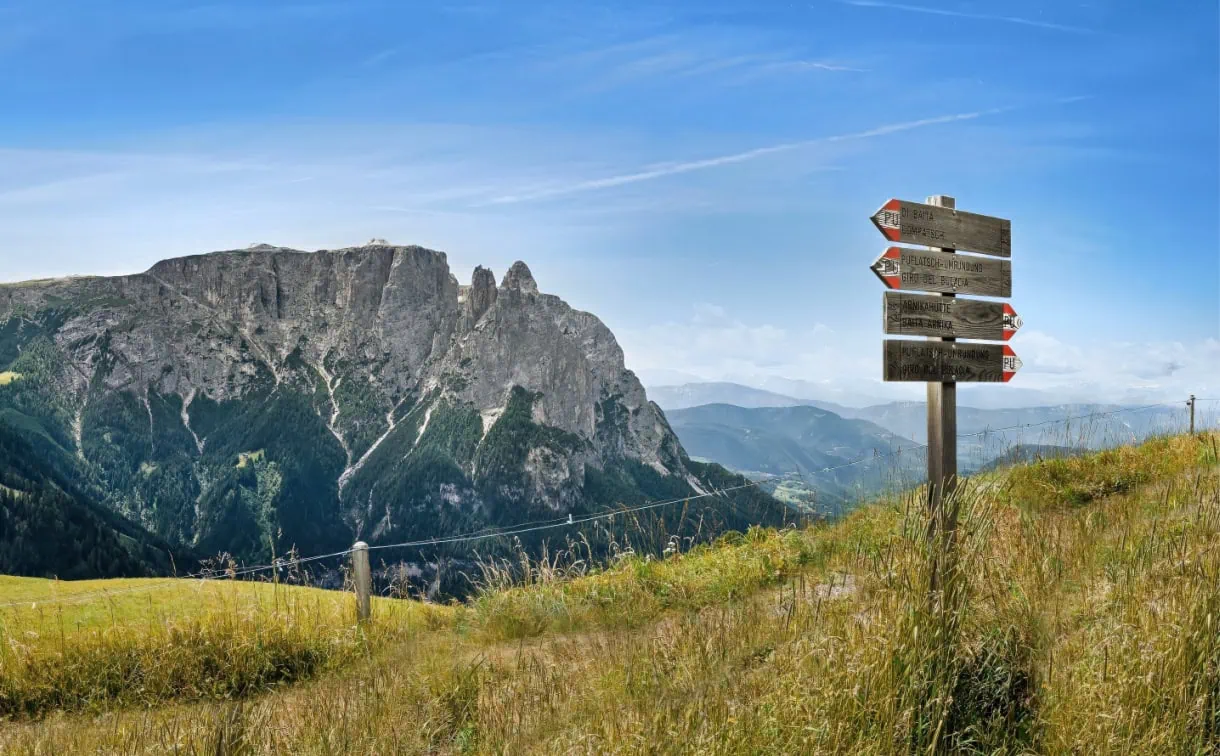
When we first sat here it felt like we’d taken someone else’s seat… and they might be back any minute. Whether you believe the stories or not, one thing’s certain: the scenery is enchanting enough to cast its own spell.
Let’s lace up and dive into one of the best short hikes in South Tyrol — ideal for casual hikers, families, panorama seekers and folklore lovers alike.
⇒ Plan Your Trip Like a Pro: Grab our South Tyrol + Dolomites Guide
Bullaccia Circuit Hike Overview
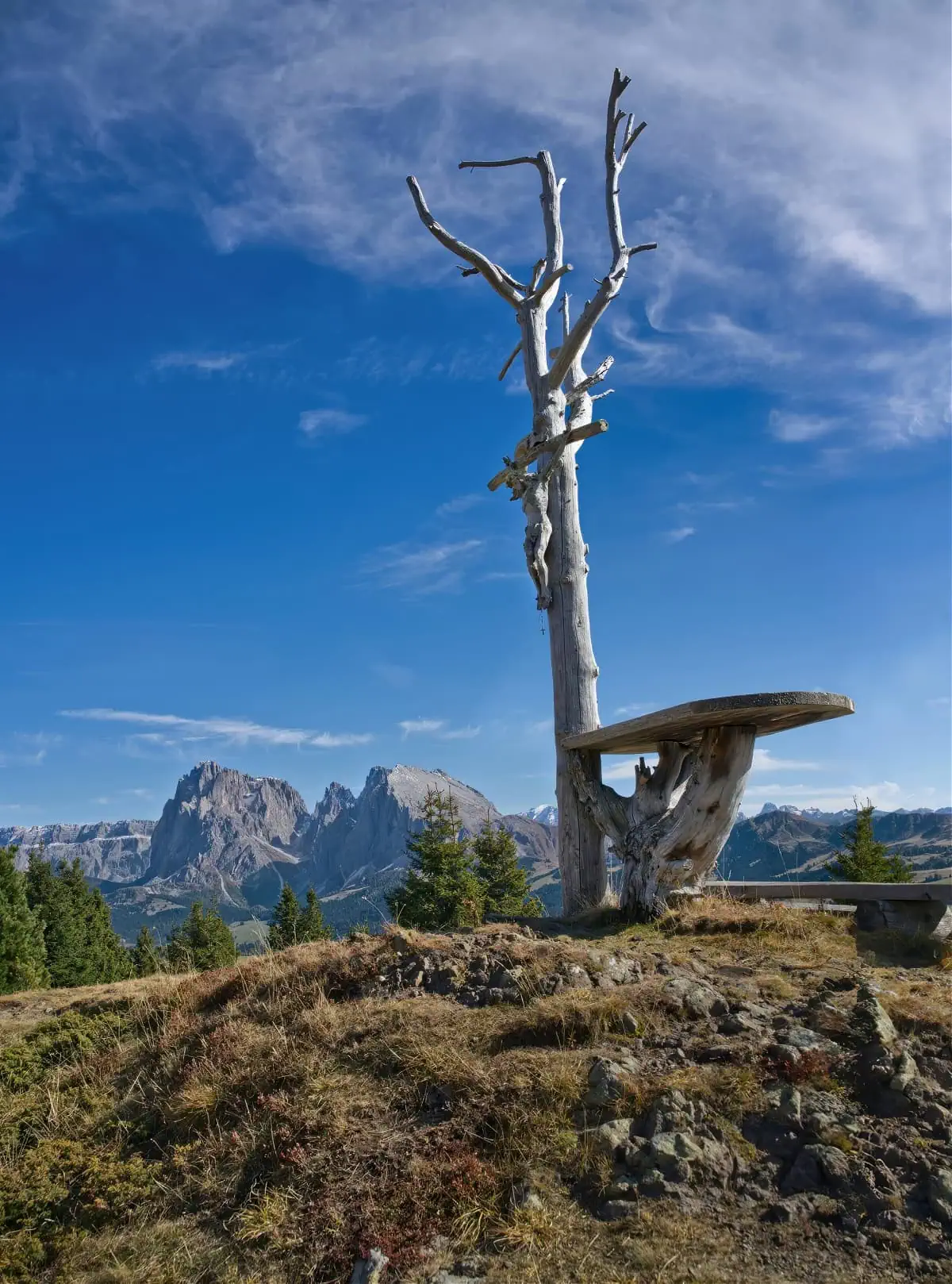
Bullaccia rises to a height of 7,054 ft (2,150 m) and forms the northern wall of Alpe di Siusi. It’s a plateau on top of a plateau, like the gods decided to pour a second round of altitude to spike an already staggering panorama.
From this sky-scraping flat-top mountain, you’ll drink in a potent potion of Dolomite peaks. Bullaccia offers a booming summit-level view of Mount Schlern (Sciliar), the jagged drama of Sassolungo, Sassopiatto and the Rosengarten, the sheer mass of the Sella Group, and the fang-like Denti di Terrarossa alongside the sweeping ridges of Seceda.
And on clear days, your gaze can even reach the “Queen of the Dolomites” herself. On the distant southern horizon Marmolada towers, her glacier gleaming like a crown of ice.
- Distance: 5.3 miles
- Duration: 2.5 – 3 hours (at a relaxed pace with photo breaks)
- Elevation Gain: ~1,066 meters (325 m)
- Difficulty: Easy to Moderate
- Where to Eat & Drink: Tschötsch Alm | Bergrestaurant Puflatsch | Arnika Hütte | Dibaita Puflatschhütte | Malga Messner Schwaige
- Starting Point: Compatsch (Compaccio) on Alpe di Siusi
Good to Know: The Bullaccia Circuit (Puflatsch Rundweg | Giro del Bullaccia) makes for a rewarding standalone hike or a scenic extension to a day spent exploring Alpe di Siusi. We tacked it onto a mellow day on Alpe di Siusi and found we had the plateau practically to ourselves.
⇒ YOU MIGHT ALSO LIKE: How to Visit Lago di Braies Without the Crowds
What is the Hexenbänke?
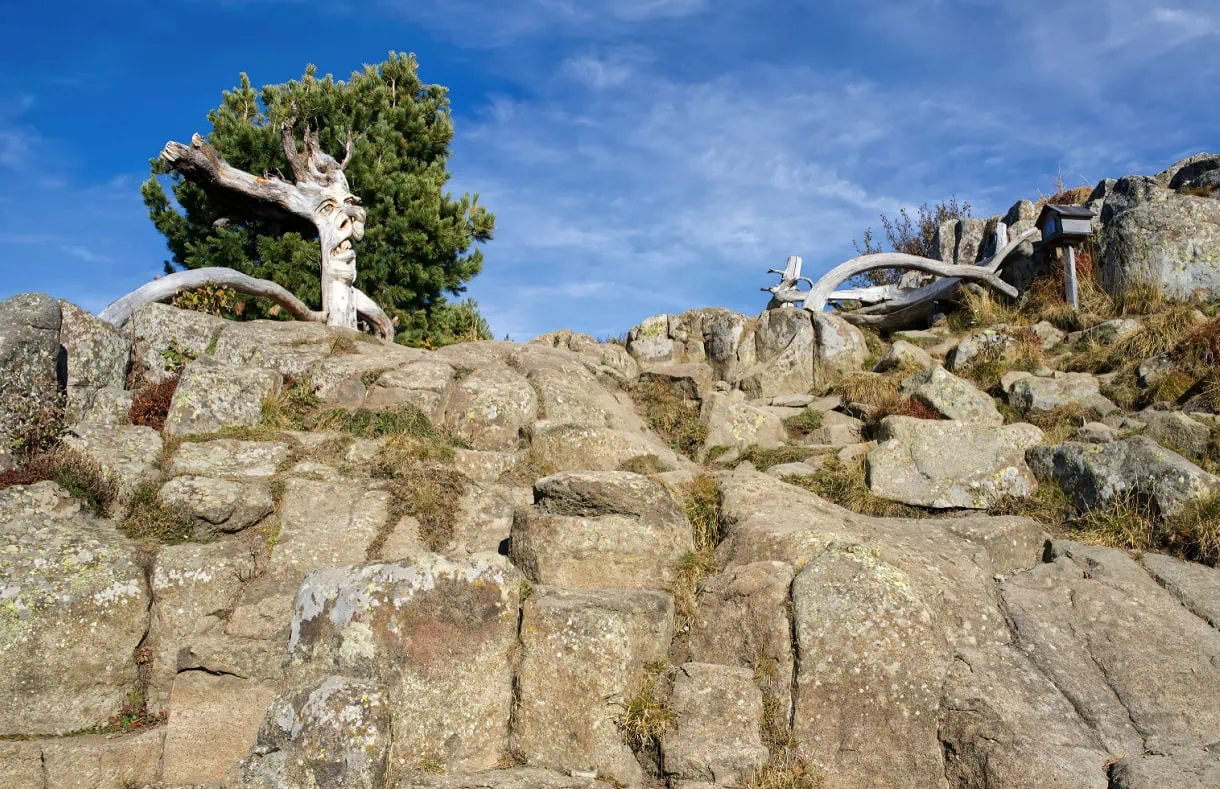
The Hexenbänke are storm-scoured slabs of volcanic rock — whether forged by accident or ancient design they look purpose-cut to enthrone something not for comfort, but command. A perfect unholy perch to recline and survey the valleys thousands of feet below… or summon a storm or two, if the mood strikes.
It is said that when darkness falls over the plateau, broomsticks hiss through the air and touch down beside the benches. The Witches of Sciliar (Schlernhexen) hold a sabbath here, drumming on cauldrons until thunder answers and hurling curses that unzip the sky. Shepherds swear that every summer squall is born at the very spot, released by a shriek so sharp it can crack barn doors in the valleys below.
⇒ YOU MIGHT ALSO LIKE: The Ultimate Guide to Tre Cime di Lavaredo
Who Are the Sciliar Witches?
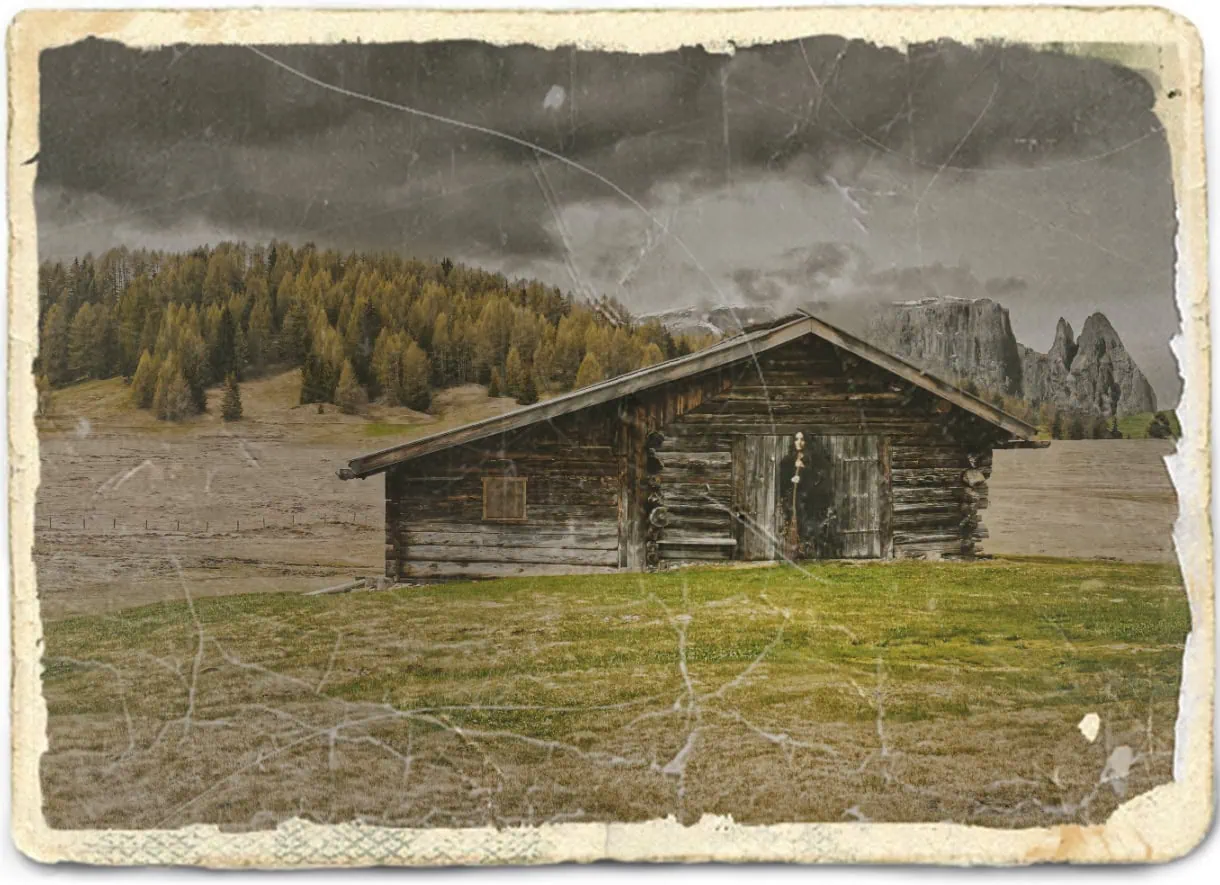
No one knows exactly when whispers of the Sciliar Witches first curled through these peaks. But some scholars speculate the Hexenbänke’s ritualistic origins may predate Christianity by thousands of years — possibly serving as a Neolithic altar in the age of Ötzi the Iceman, with stone alignments mirroring the solstice sun.
By the Middle Ages, those whispers had grown teeth. Folklore twisted into fear, and fear into flames.
In 1506 and again in 1510, inquisitors held two major witch trials at Prösels Castle in Völs am Schlern, just below the Schlern massif. Presided over by local lord Leonhard von Völs, the proceedings condemned 28 women and 2 men — though some sources suggest as many as 44 people were executed. The accused, crushed beneath the screws of torture, “confessed” to flying to the Hexenbänke, dancing with the Devil, and summoning storms strong enough to strip grain from the fields.
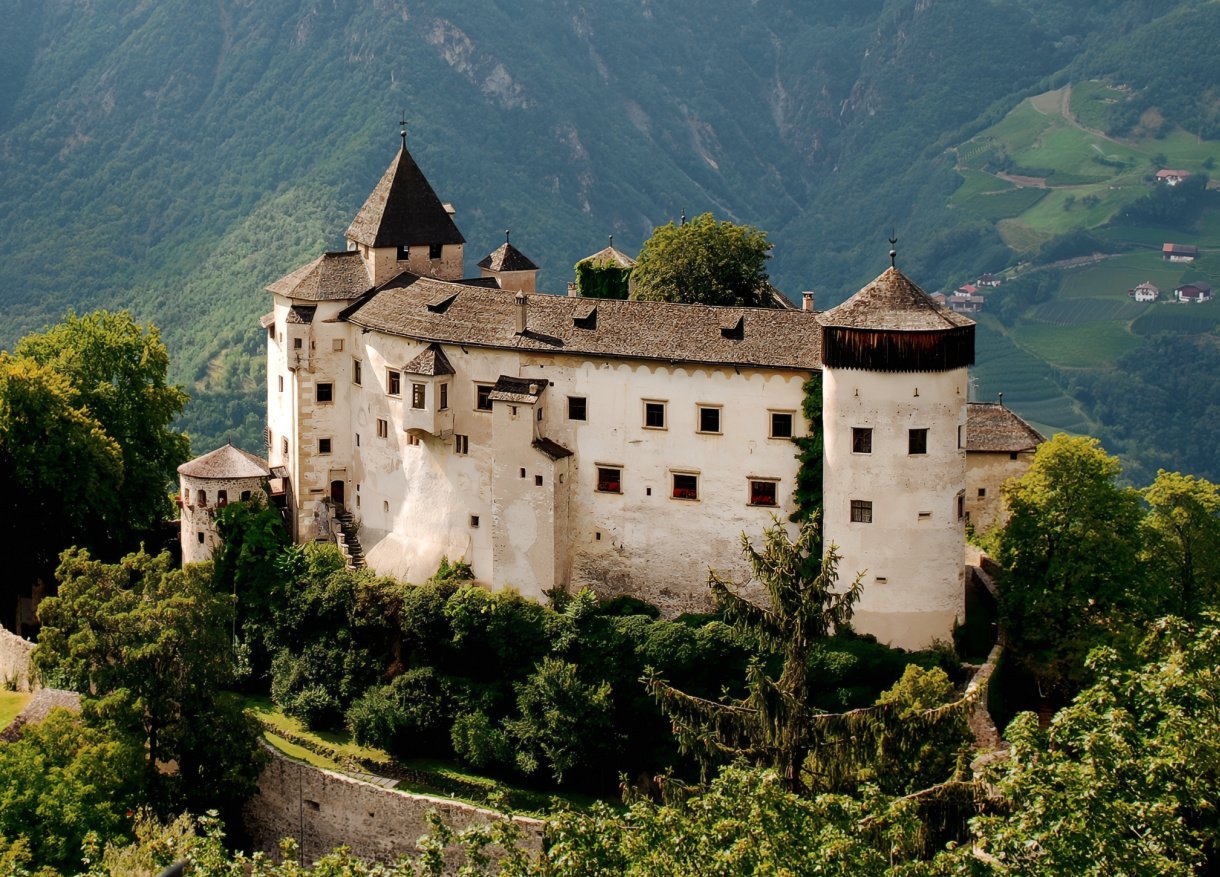
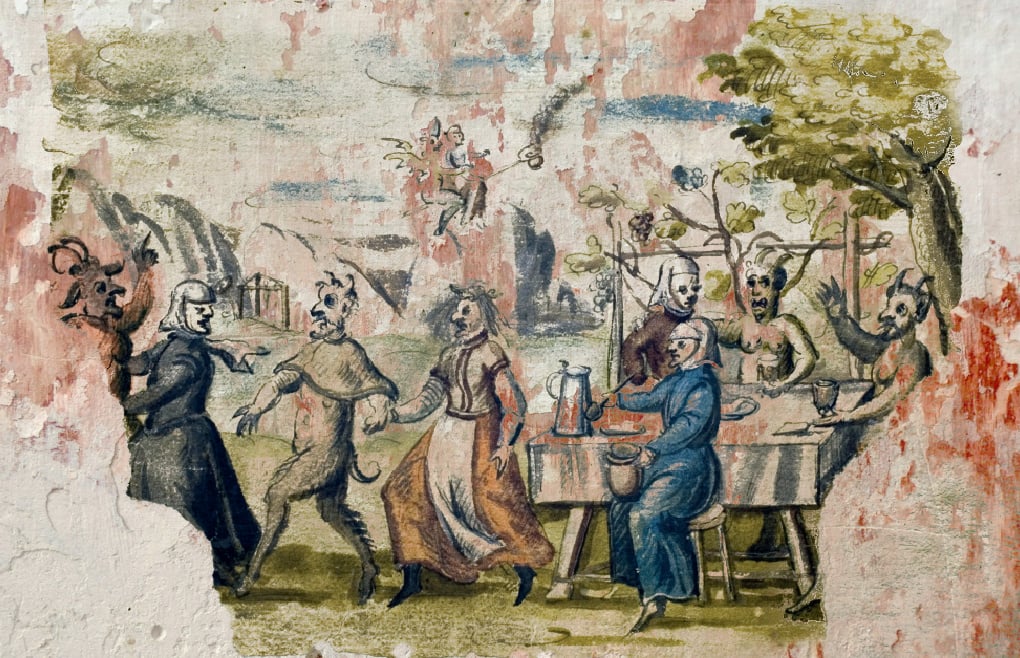

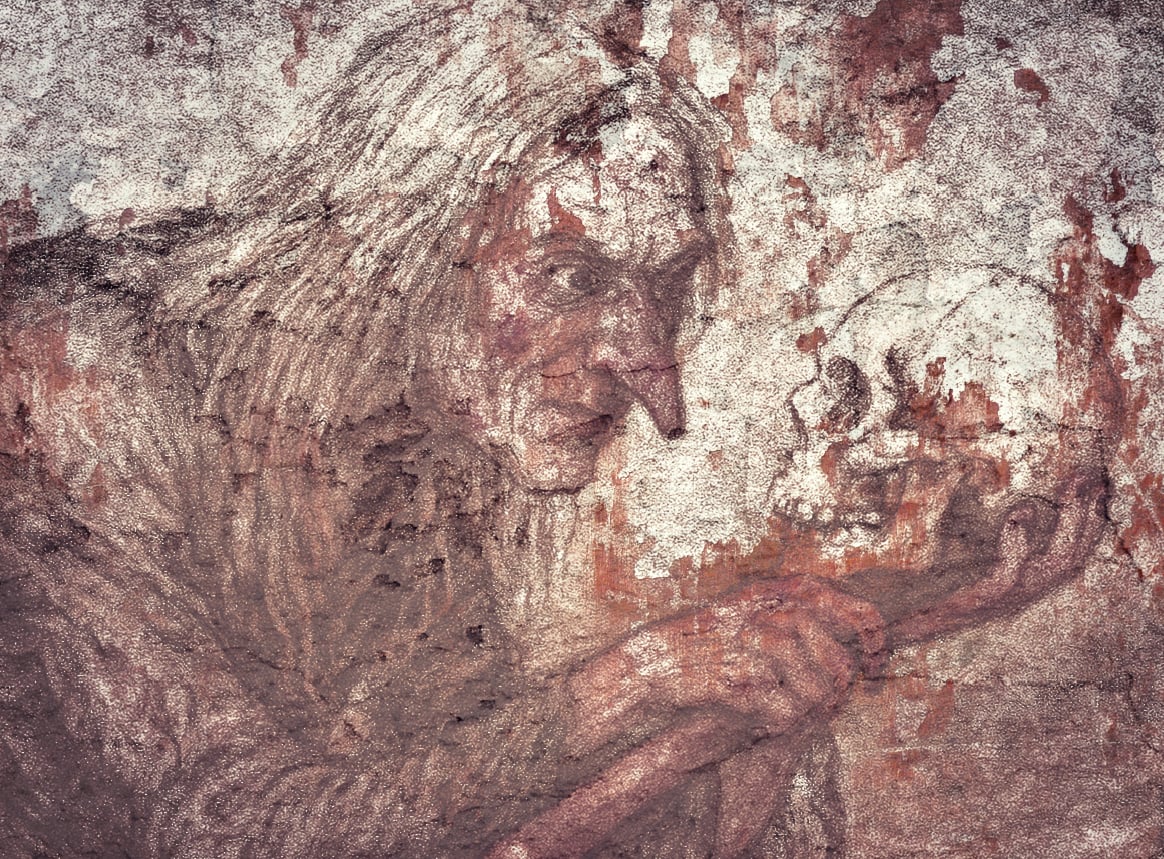

The panic peaked during the Peasants’ War of 1525. Lord Völs, desperate to divert blame for mass infant deaths, accused nine women of witchcraft. They were broken on the rack until they admitted to slaughtering babies, roasting the flesh on the Hexenbänke, and feasting with the Devil atop the ridge of Schlern.
All nine were executed by fire. The wind that day, chroniclers noted, roared like a beast being born — as if the mountain itself bore witness.
Over time, their fate curdled into legend. Those nine are said to dwell still among the tempestuous peaks — the Witches of Sciliar, a coven bound by storm, shadow and slaughter. To this day, when Schlern vanishes into cloud and the meadow mist curls like a serpent, the villagers do not gaze idly upward. They draw their coats close, mutter ancient protections, and know the witches are taking their throne once more.
⇒ YOU MIGHT ALSO LIKE: How to Visit Lago di Carezza: Italy’s Lake of Rainbows
How to Hike the Bullaccia Circuit
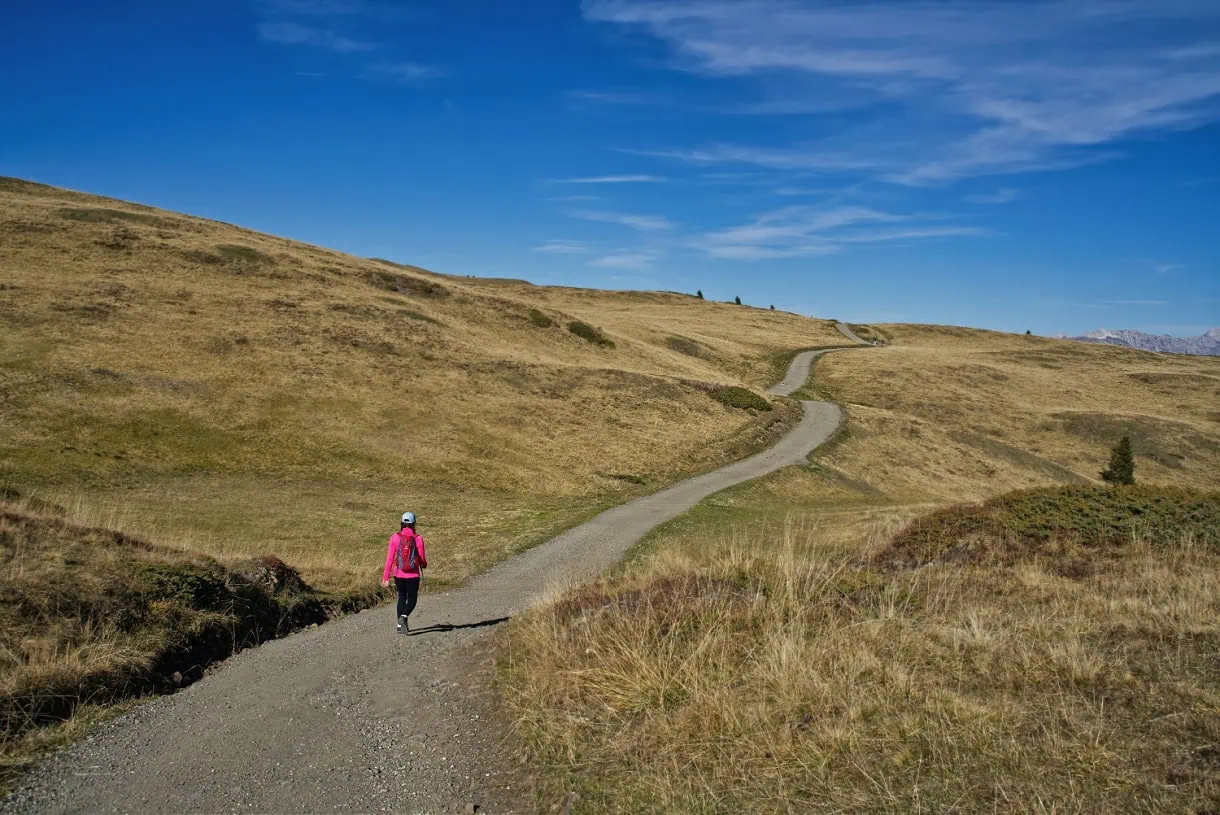
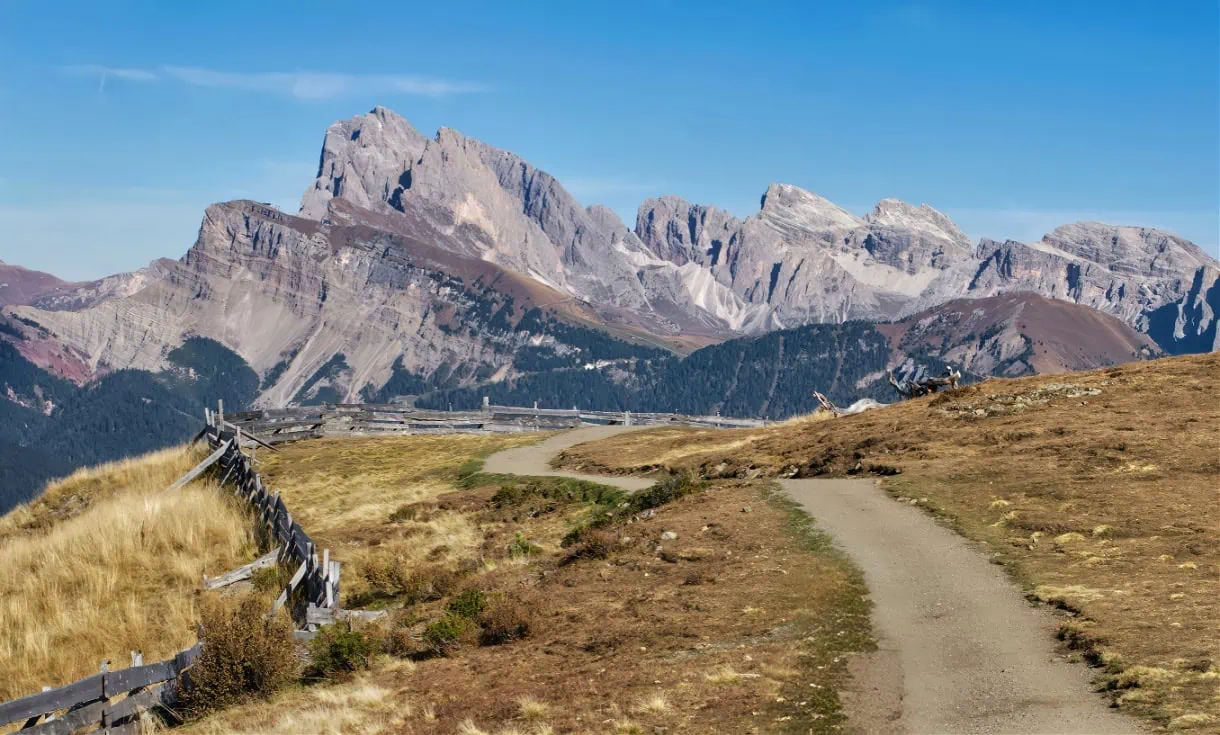
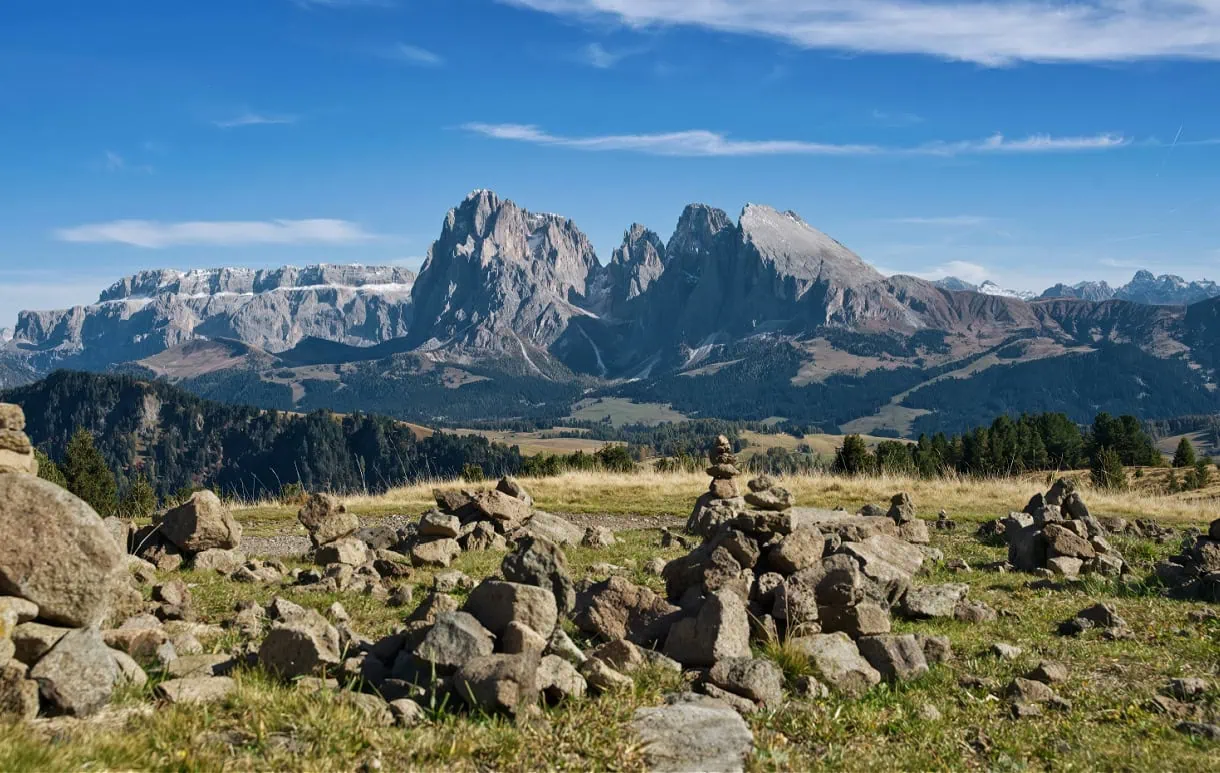
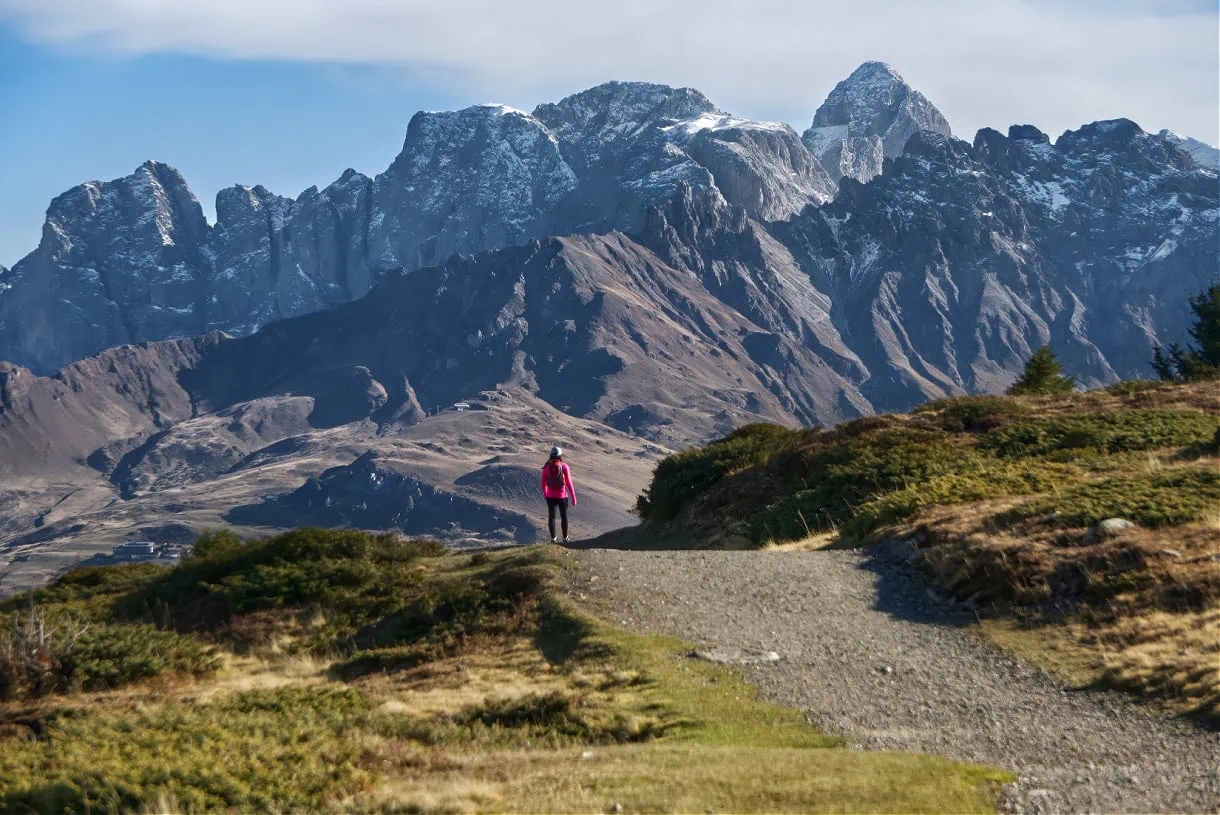
To begin the Bullaccia Circuit Hike, head to Compatsch, a small hamlet at the edge of Alpe di Siusi. The easiest way to get here is via the Seiser Alm Cable Car from the village of Seis (Siusi). Another option is to park at the P2 lot in Compatsch if you are driving in Italy and prefer to avoid the lift.
Good to Know: If you’re visiting by car, you must arrive at the parking lot before 9:00 AM or after 5:00 PM. Daytime vehicle access is restricted to preserve the alpine environment. You can leave Alpe di Siusi at anytime.
⇒ YOU MIGHT ALSO LIKE: Discover Wildbad Innichen: Ghostly Ruins Deep in the Dolomites
Step-by-Step Hiking Directions
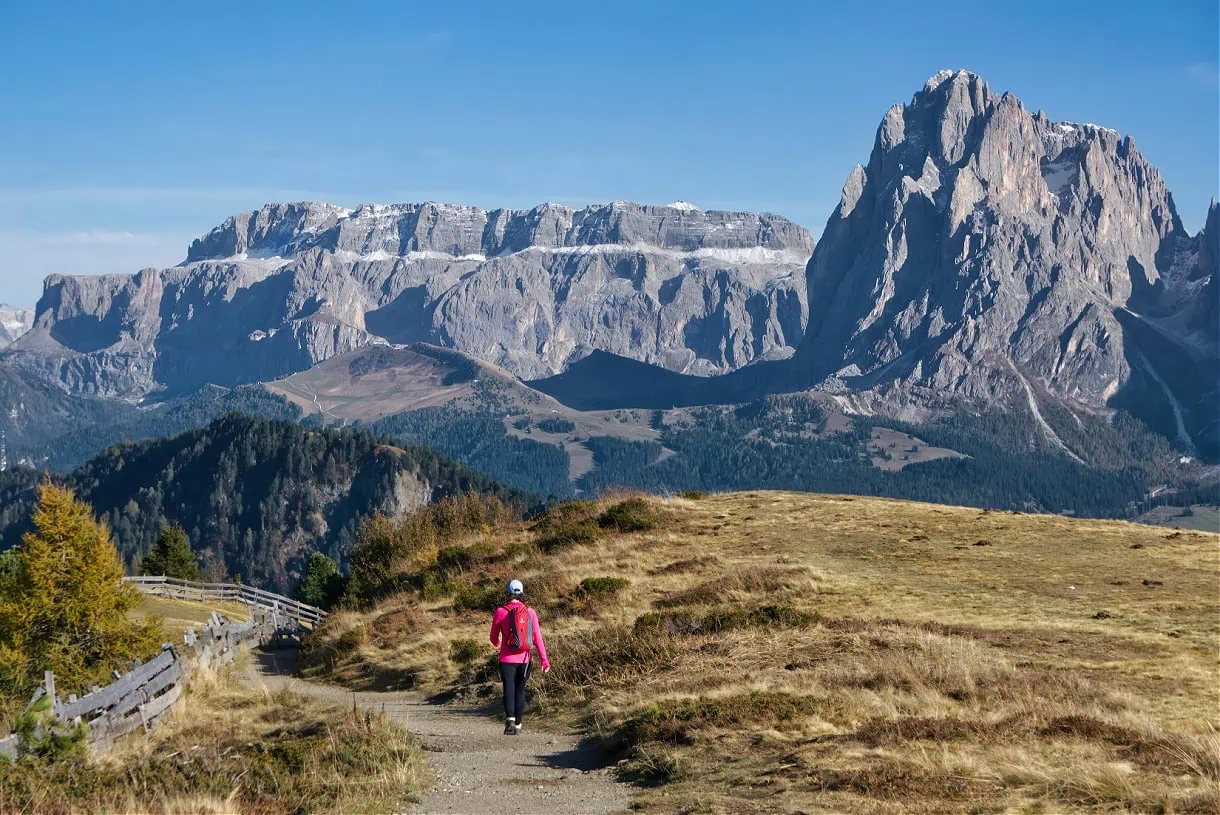
Begin by the Seiser Alm Cable Car Station
From the cable car station, head left on trail no. 14 towards the Bullaccia plateau. This trails leads you steeply uphill to the start of the circuit. Along the way, you will pass the Tschötsch Alm hut.
Optional: Take the Telemix Bullaccia Lift
To avoid the initial climb, take the lift up to the plateau and begin the trail at the upper station.
Stop at Engelrast (Angels’ Rest)
From Tschötsch Alm, you continue the ascent towards the Bergrestaurant Puflatsch. Shortly after reaching the upper lift station, follow the signs to Englerast — a 360-degree viewpoint with a platform that helps you pinpoint the prominent peaks.
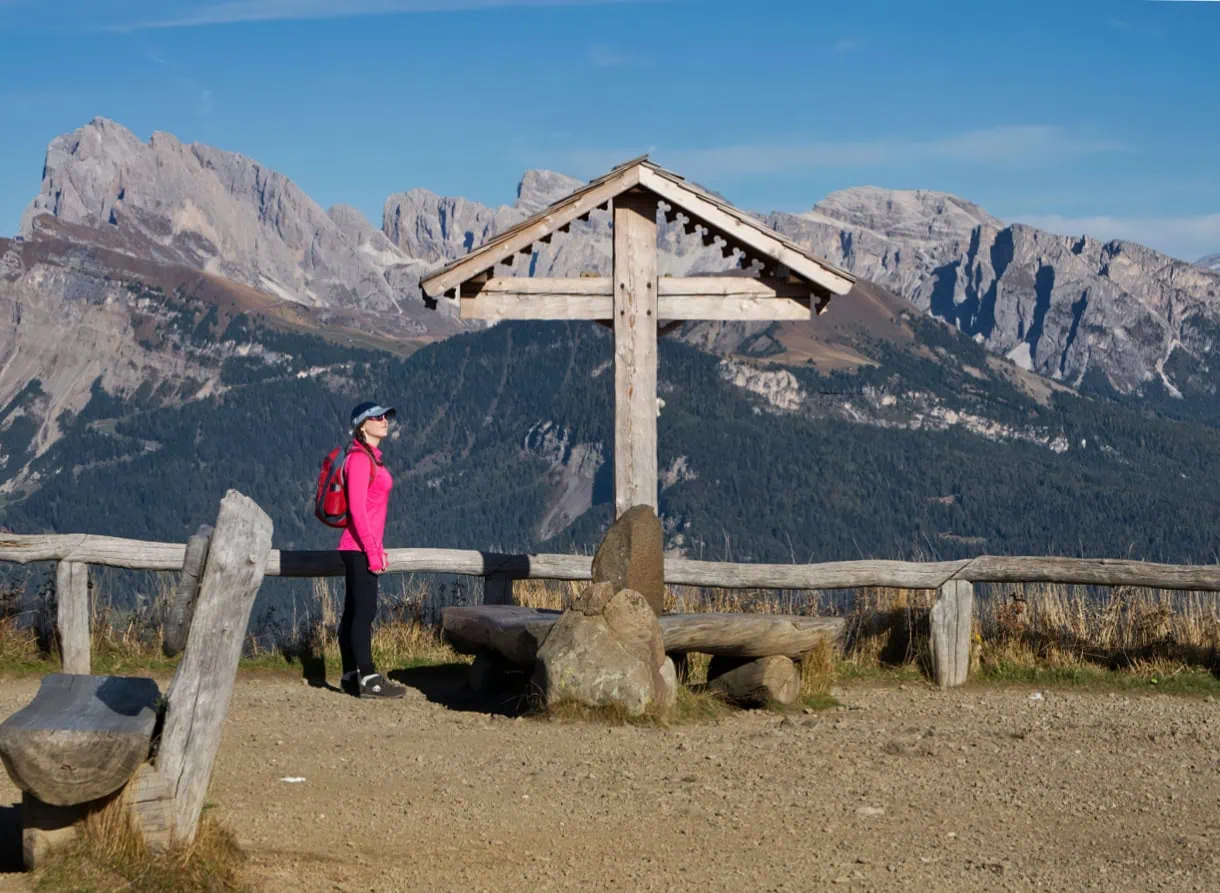
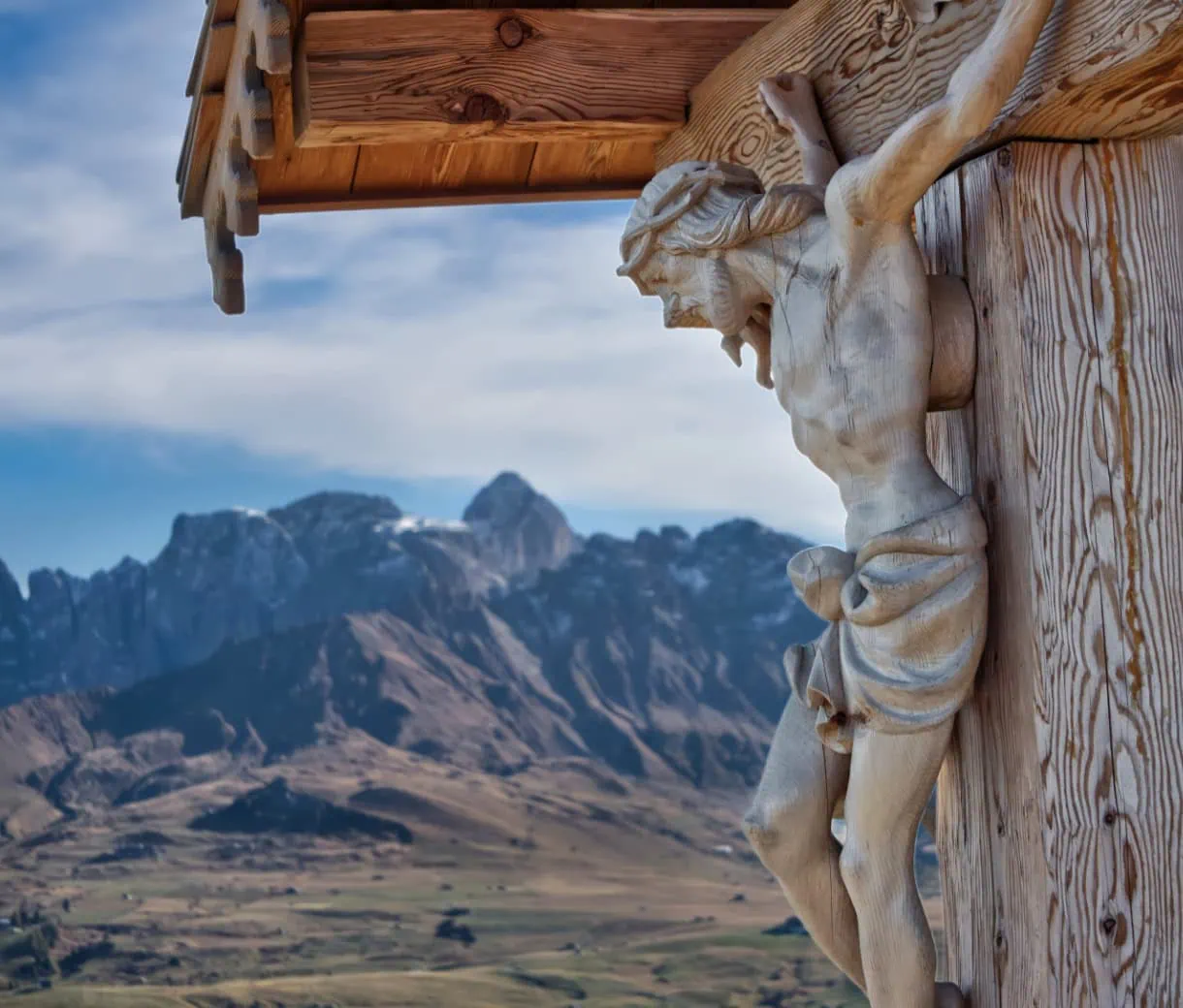
Continue to Fillner Kreuz (Cross) Viewpoint
The trail leads across open pastureland and gentle ridges toward the Fillner Kreuz, a beautiful wayside shrine overlooking Val Gardena. From here, you can even spot the summit of Peitlerkofel rising above Val di Funes in the distance. By the way, before reaching the viewpoint, you can take a slight detour to Malga Messner Schwaige if you would like a break. Simply follow the signposts.
Reach the Hexenbänke (Witches’ Benches)
After the Fillner Kreuz, the trail curves to the dramatic cliff edge where the Hexenbänke beckons. Atop the rock formations are weathered trees contorted into a bench where you can take a seat and do your best to cast a spell across Valle Isarco.
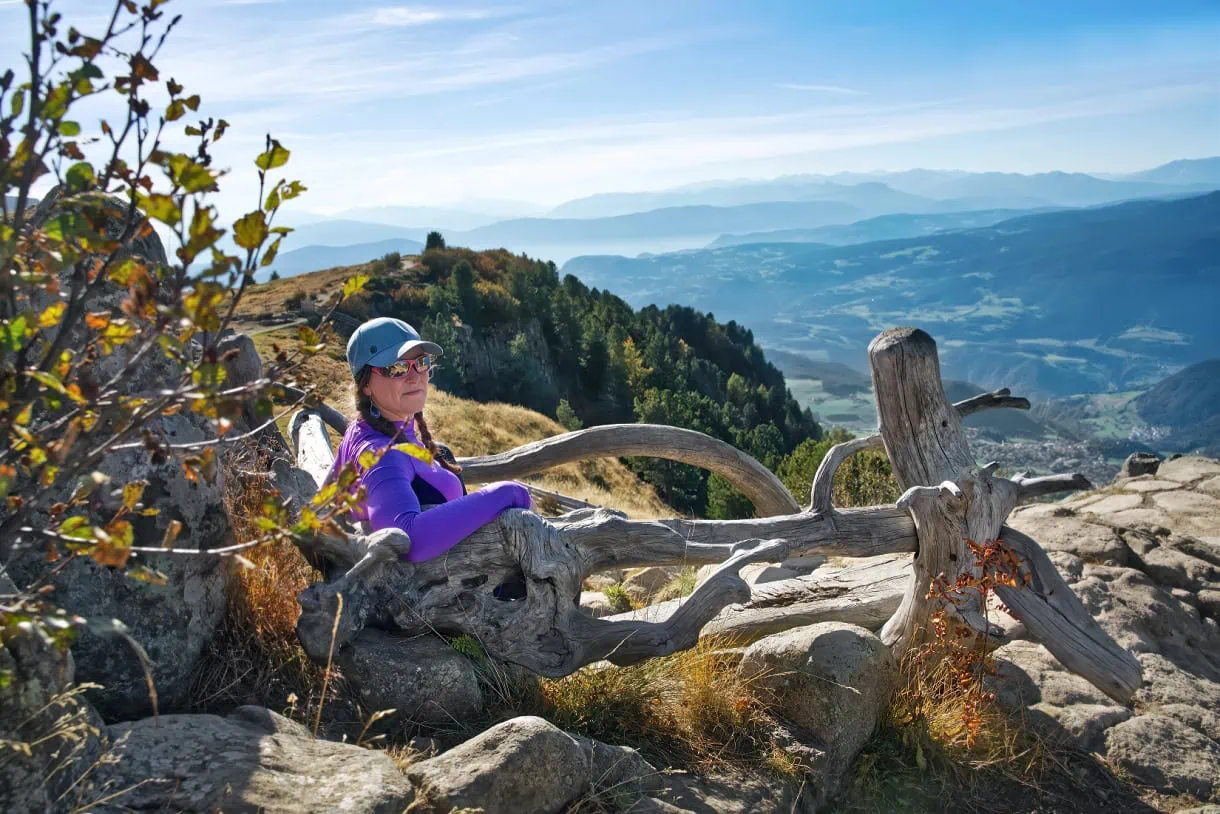
Descend to Gollerspitze
From the benches, the trail gently descends through pine-dotted slopes to the Gollerspitze and its summit cross. Here, you can sit on a dragon-headed bench and enjoy an eagle-eye view of Castelrotto. After soaking in the views, continue on to Arnika Hütte, an historic rifugio first mentioned in 1558.
Return to Compatsch
Beyond Arnika, the trail begins to circle back towards Alpe di Siusi. Before returning to your starting point in Compatsch, you’ll have another chance to dine on South Tyrolean dishes or sip refreshments at the Dibaita Puflatschhütte.
⇒ Find You Perfect Stay on Alpe di Siusi
The Best Time to Visit Bullaccia
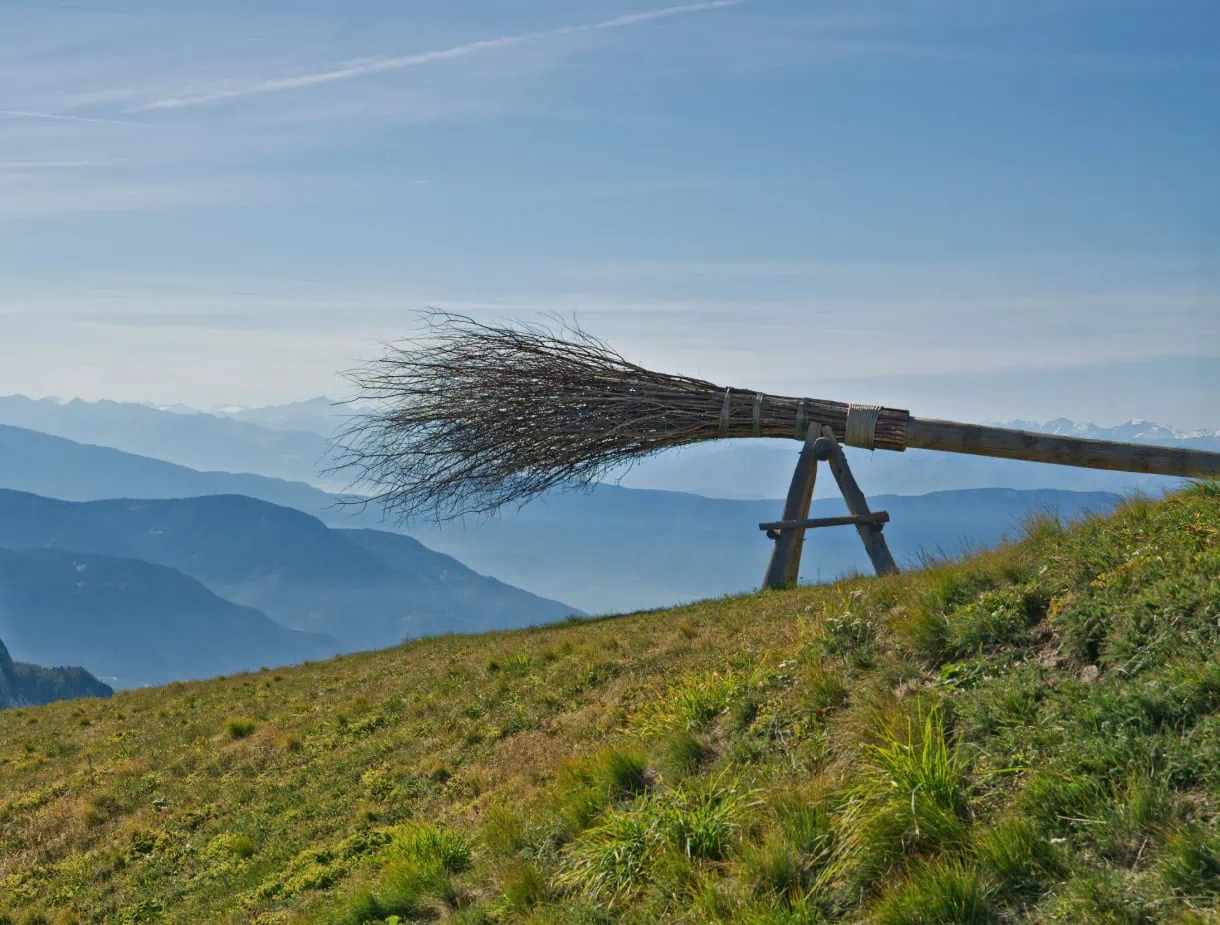
Bullaccia is a mountain made for lingering… well, at least while daylight still rules the hours. Being out here after dark feels like flipping a coin between folklore and fate. And at some point, the question becomes: are you still hiking, or are you trespassing?
The best time to hike the Bullaccia Circuit is typically from late May to mid-October, when the trail is snow-free and the meadows brim with alpine blooms. If you visit at the front or back end of the season, there’s a good chance you’ll have much of the plateau to yourself — just as we did. But keep in mind: the huts may still be closed, so pack accordingly.
And honestly? The solitude only sharpens the spell. With the wind in your ears and no one else in sight, it’s easy to imagine the witches still stirring just beyond the trees.
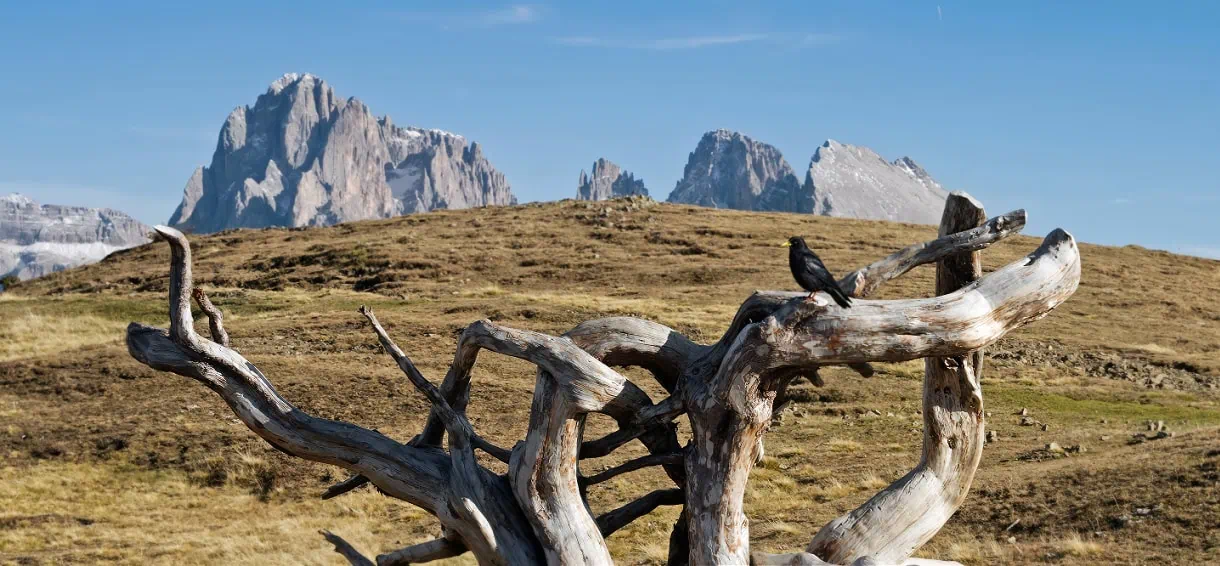
If you’re visiting South Tyrol in winter, whether carving ski runs or drifting through Christmas Markets during the holiday season, do not rule out Bullaccia. The circuit can be winter-hiked or snowshoed when the snow lies firm beneath your feet.
Will the Sciliar Witches still be lurking in the cold? Possibly. But you can definitely count on encountering a horde of Krampus sprawled across the Hexenbänke, horns tilted to the sky, daring you to sit.
⇒ GET INSPIRED: Discover the Best Hikes in the Dolomites